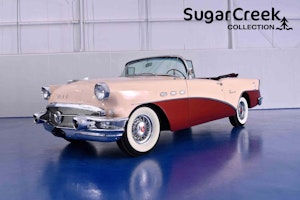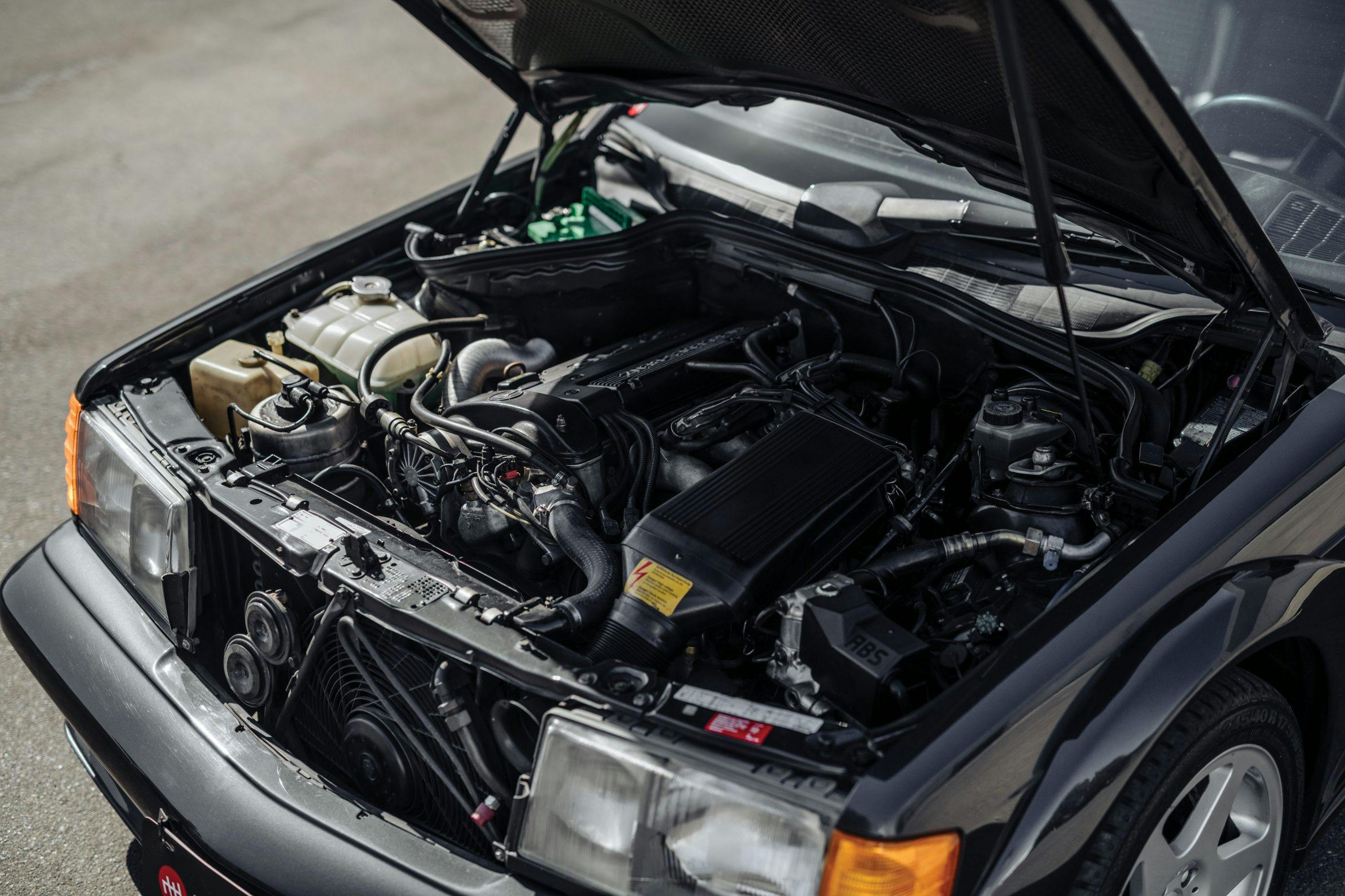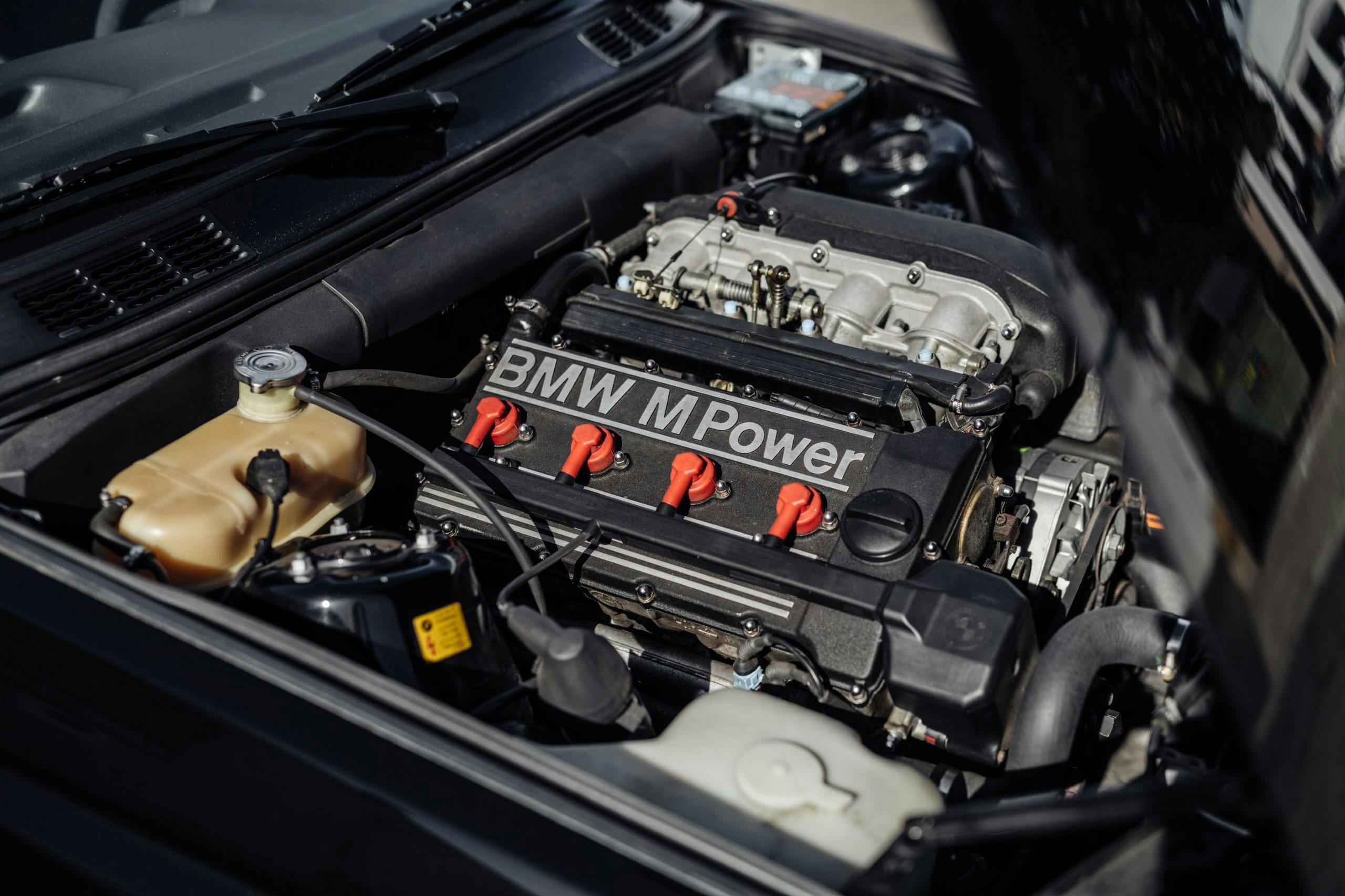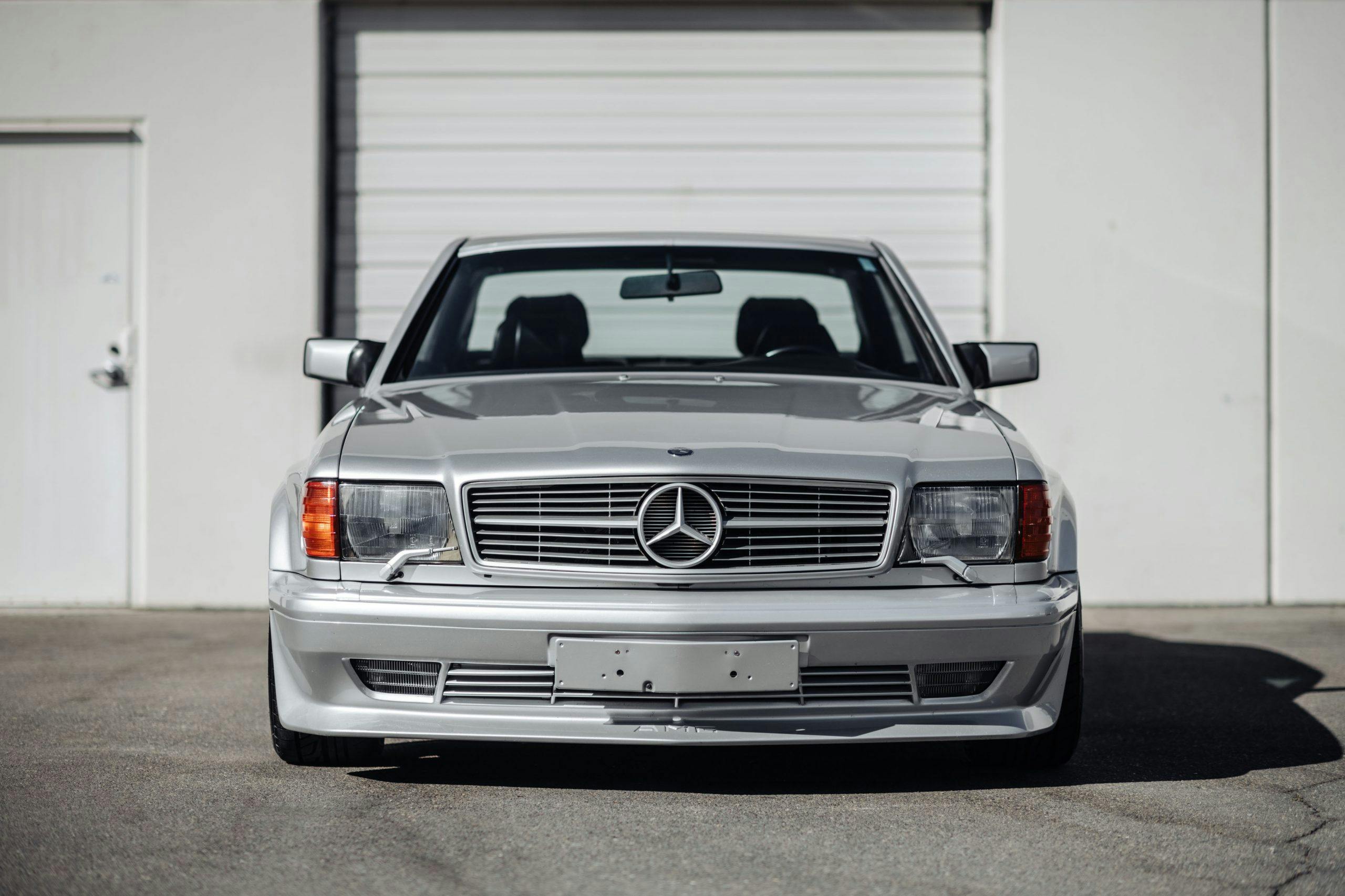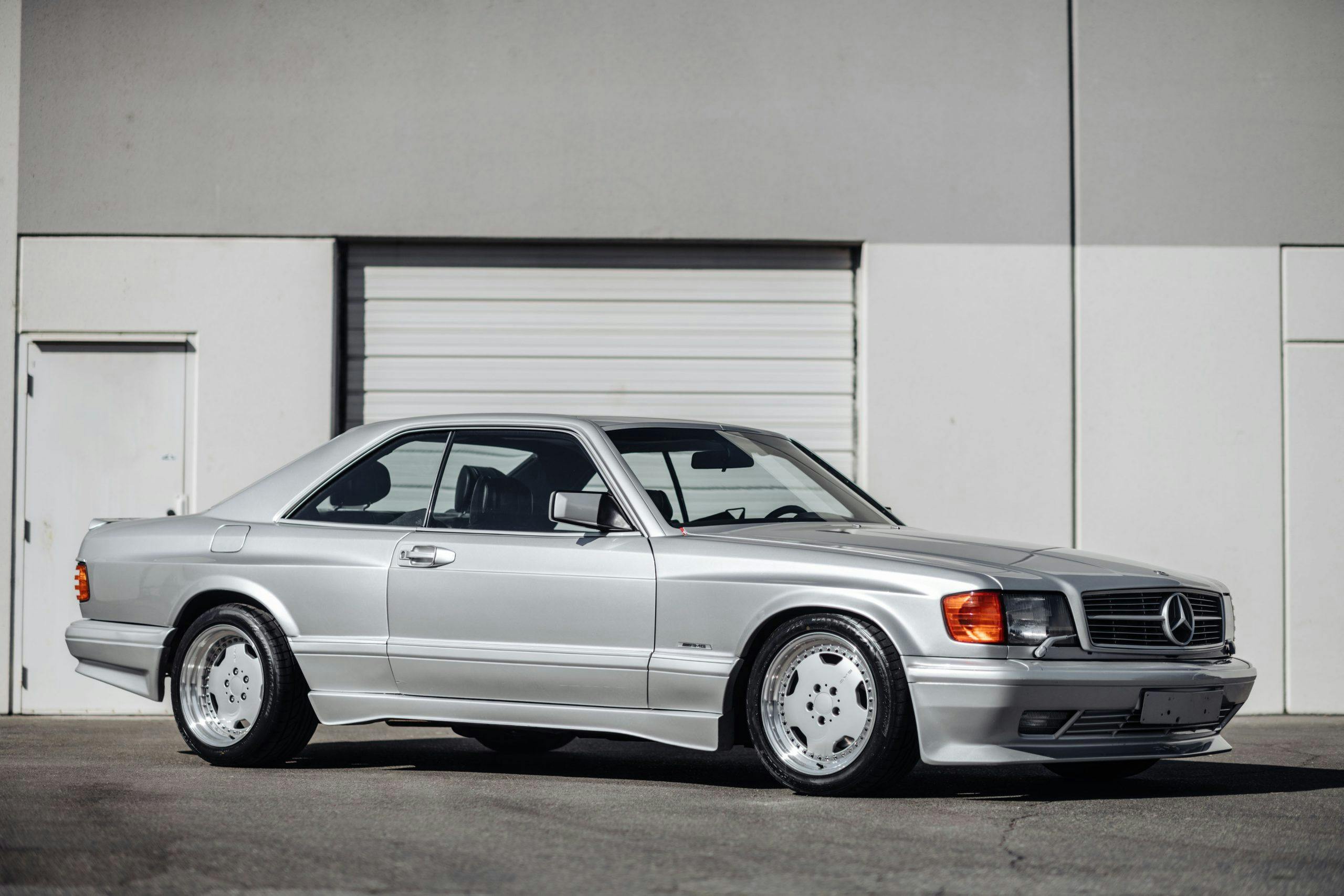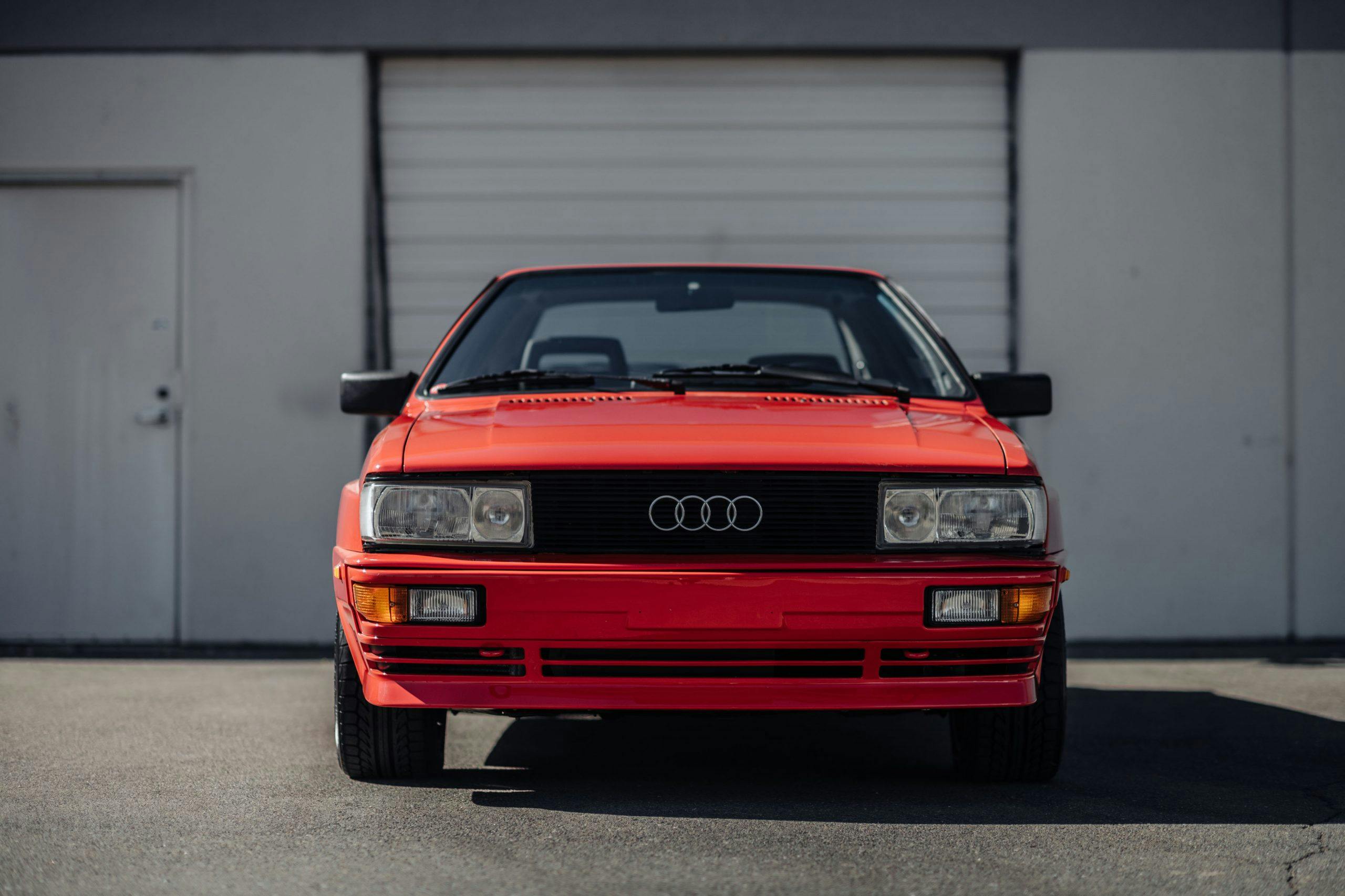Media | Articles
5 rare homologation specials you need to take racing right now
What is “homologation”? What’s a “homologation special”? And why are these homologation specials so … special? It all comes down to racing. Most series for production-based cars require manufacturers to build a certain number of a certain type of car before they can take it racing. Such regulations are intended to preserve a connection between the cars in the showroom and the cars in the pit lane (or rally stages), and that process of approval is called homologation. Oftentimes, the road-going versions are exotic in their own right and have more in common with their race car relatives than anything else in the company’s lineup.
Homologation specials are also typically quite rare. Manufacturers usually only build as many cars as they needed to in order to go racing, sometimes as few as a couple hundred examples. Rarity combined with racing or rally pedigree usually translates to collectibility in this hobby, and RM Sotheby’s has consigned a group of six cars it’s billing as “The Homologation Collection” for its Arizona auction next January.
1983 Audi quattro

Presale estimate: $40,00–$50,000
When you hear “homologation” and “Audi Quattro” in the same breath, you probably think of the sliding, screaming 500-horsepower Sport Quattros, the ones from the World Rally Championship’s infamous Group B days. Or you might think of one of the 214 road-going versions Audi built to homologate the Sport Quattro for rally duty. This car isn’t one of those, but it still has the box flares, the squared-off ’80s lines, a wailing turbocharged five-cylinder driving all four wheels, and plenty of rally pedigree in its own right.
Marketplace
Buy and sell classics with confidence
This is an Ur-Quattro (“Ur” is a prefix for “original” in German), and while not as extreme, rare, or valuable as the ‘roided up Group B Sport Quattro, Audi’s original all-wheel driver is still important and still collectible. When regulations changed in international rallying to allow four-wheel drive, Audi charged head on with the technology in 1980, using a high-performance all-wheel-drive version of its Audi 80 (B2) coupe. After working out early issues of the system (reliability, complexity, weight) and finally winning the World Rally Championship in 1982, Audi and the Quattro had changed the sport forever.

U.S. sales of the Ur-Quattro road car didn’t begin until 1983, and even then only a few hundred trickled over to our shores. Although this one wears European-spec headlights and bumpers, it sold new in Connecticut and has covered 57,109 miles according to the photos. We’ve seen it before, as it was a $47,250 no-sale on Bring a Trailer a few months back in July. It also sold for $55,000 at the Auctions America Santa Monica sale five years ago. RM’s presale estimate this time around puts the car in the condition range of #3+ (Good) to #2- (Excellent).
1990 BMW M3 Sport Evolution

Presale estimate: $125,000–$150,000
BMW built the original M3 in large part to race its 3-Series in Group A competition and in Germany’s Deutsche Tourenwagen Meisterschaft (DTM) series, and needed to complete 5000 cars to do so. BMW wound up building far more standard M3s than that, but to homologate major improvements, or “evolutions,” in the design, the FIA required an additional 500 cars built. An M3 “Evolution” model arrived in 1989 with thinner glass, larger 16-inch wheels, an upgraded engine, and other improvements. Just 505 of those M3 Evolutions were built.

Then, BMW introduced the M3 “Sport Evolution” model, with the engine bored out to 2.5 liters and given a new crankshaft. There were also even larger 18-inch wheels as well as a lower ride height, wider track, upgraded suspension, an adjustable rear wing, and a wild “M-Rain” pattern for the seats and door panels. All were added to keep the M3 competitive on the track. Performance benefit of the special upholstery is debatable.
Performance-wise and collectibility-wise, the M3 Sport Evolution is the pinnacle of the E30-generation 3-Series. This one shows some use with 128,670 km (79,952 miles) on the clock, so it likely won’t be breaking any world records, but it’s a special car (with very cool seats) and it’s sure to get BMW fans excited.
1995 Lancia Delta HF Integrale Evoluzione II

Presale estimate: $90,000–$110,000
The Delta name goes way back in Lancia history and it’s a car that took many forms, from a humble family hatchback of the 1970s to the fire-spitting World Rally weapons of the ’80s and ’90s. The Delta, in Group A form, was also Lancia’s last and most successful rally car, winning the World Rally Championship six times on the trot from 198–92.
After the banning of Group B rally cars during the 1986 season, the World Rally Championship shifted to more highly regulated Group A specs for 1987, and Group A homologation required 5000 units built. Lancia’s Delta HF4WD was the obvious choice, and it won eight rallies that year. This Group A version of the Delta would then go through several changes to keep it on top of the standings in the WRC, and to homologate those changes, the Lancia had to modify and improve the road cars as well.
The Delta HF “Integrale” soon arrived with its signature flares well as a larger turbocharger and bigger wheels, and that car won the WRC in 1988.
The 1989 season then brought a more powerful 16-valve version of the Integrale with a hood bulge and lower ride height, and it won the 1990 and ’91 WRC titles. Late in 1991 Lancia introduced a Delta Integrale “Evoluzione” (Italian for, you guessed it, “Evolution”), with power up to 210 hp in the road cars, wider track and bodywork, and more vents. Finally, an “Evoluzione II” came in 1993 with 215 hp, 16-inch wheels, and body-color rain gutters.

Lancia never sold the various homologation Deltas in the United States, and rallying doesn’t have a huge fanbase here, but demand for these hottest of hatches is clearly there. As Delta Integrales and Evos have gradually turned 25 years old and become eligible for import here, prices have shot up. Since the end of 2015, the median condition #2 (Excellent) value for these cars has increased 153 percent, and values range from the low-$20,000 range for an early car in #4 (Fair) condition to over 150 grand for an Evo II in #1 (Concours) condition.
Lancia sold HF Integrales in several special edition paint schemes, and such cars command a huge premium. This 40,000-km (24,855-mile) example is one of the 205 “Blu Lagos,” so its estimate seems a little modest for a special paint car. RM sold a “Bianco Perlato” Evo II (one of 365) for $137,500 earlier this year and a “Giallo Ferrari” (one of 400) for $190,400 back in 2017, but those were both cleaner examples.
1972 Lancia Fulvia 1.6HF

Presale estimate: $30,000–$40,000
While Lancia’s long and glorious run in international rallying ended with the muscular, ground-pounding Delta, it began with the humble little front-drive Fulvia. The car was introduced as a berlina (sedan) in 1963 with Lancia’s nifty narrow-angle V-4 and a transaxle ahead of the driver. A coupe followed in 1965. The Fulvia “HF” came later in the year and Lancia took it rallying, marking the company’s first major assault on motorsports in a decade.

To keep it competitive, performance improved over the years and the Fulvia’s crowning achievement was the 1972 International Championship for Manufacturers (the WRC didn’t officially arrive until 1973). This car is a later Series II HF and looks to have been mildly set up for what a Fulvia does best: rallying.
1990 Mercedes-Benz 190E 2.5-16 Evolution II
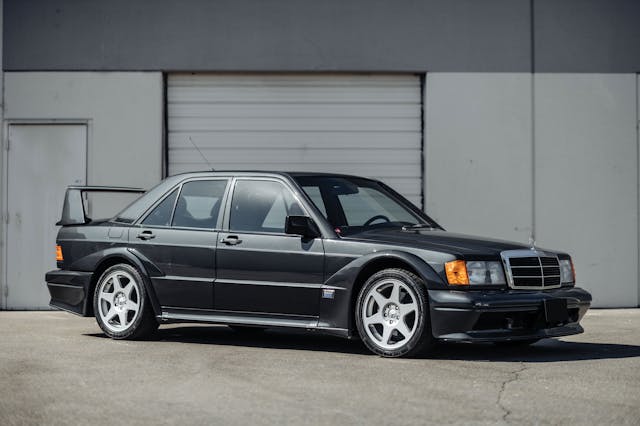
Presale estimate: $175,000–$225,000
The Mercedes-Benz 190, known internally as the W201, was the entry-level ’80s Mercedes and the precursor to the C-Class. For motorsport fans, though, the only versions of the 190 that matter are the 2.3-16 and the 2.5-16. Powered by Cosworth-tuned and developed engines, they were Mercedes-Benz’s weapons of choice in DTM racing. Initial success eluded them on the track, but they were Stuttgart’s answer to the BMW M3 and they proved refreshingly sporty cars from a company that mostly built hefty luxury cruisers.

After lots of improvements, a DTM championship finally did come Mercedes’ way in 1992, and the Evolution II model is the one that brought home the hardware. The fastest, most developed and most aggressively styled of the Cosworth Benzes, it’s also highly coveted by fans of “youngtimer” collector cars—not to mention one of the most valuable modern Mercedes. Just 500 road cars were built from 1990–91 to homologate the Evo II’s more aerodynamic bodywork, extra power, and other features.
This one shows 131,296 km (81,584 miles) in the photos but looks well taken care of. We’ve seen three other 190 Evo IIs at auction so far this year. One with 10,030 km (6232 miles) sold for $258,500 online this August, another with 41,357 km (25,698 miles) sold for $231,000 back in May, and a flawless example with just 7600 km (4722 miles) sold for an eye-popping $434,000 back in January at Scottsdale, so mileage clearly matters.
1989 Mercedes-Benz 560 SEC AMG 6.0 (Honorable mention)

Presale estimate: $175,000–$225,000
AMG, now Mercedes-Benz’s in-house high-performance division, started out as an independent company building racing engines. It soon began to tune and modify existing Mercedes road cars for wealthy customers. The first true joint product between Mercedes and AMG didn’t arrive until 1993, but already by the time this 560 SEC AMG 6.0 was built you could get your AMG delivered through a Mercedes dealer with a factory warranty to boot. The list of AMG improvements included larger wheels, improved suspension, a body kit, and an enlarged 6.0-liter V-8 with a four-cam head that bumped horsepower from 238 in the standard car to 385 and doubled the torque.

The conversion for this widebody car reportedly cost $200,000 (a ton of coin 30 years ago), but only in the past few years have early (aka “pre-merger”) AMG values started catching up to that original figure. This one, which shows 90,393 km (56,168 miles) sold for $154,000 back in 2016 and has done just 171 km since then, and if anything it should be worth more today. Another widebody car sold for $390,000 earlier this year. If you prefer black and like a little bit more subtlety, there’s a mint condition narrow body car for sale right now as well.
We should also note that neither Mercedes-Benz nor AMG took this car racing, so why it’s billed as part of the “Homologation Collection” isn’t immediately clear. Still, it has big fat flares and it’s too compelling of a car not to ignore.
Like this article? Check out Hagerty Insider, our e-magazine devoted to tracking trends in the collector car market.


